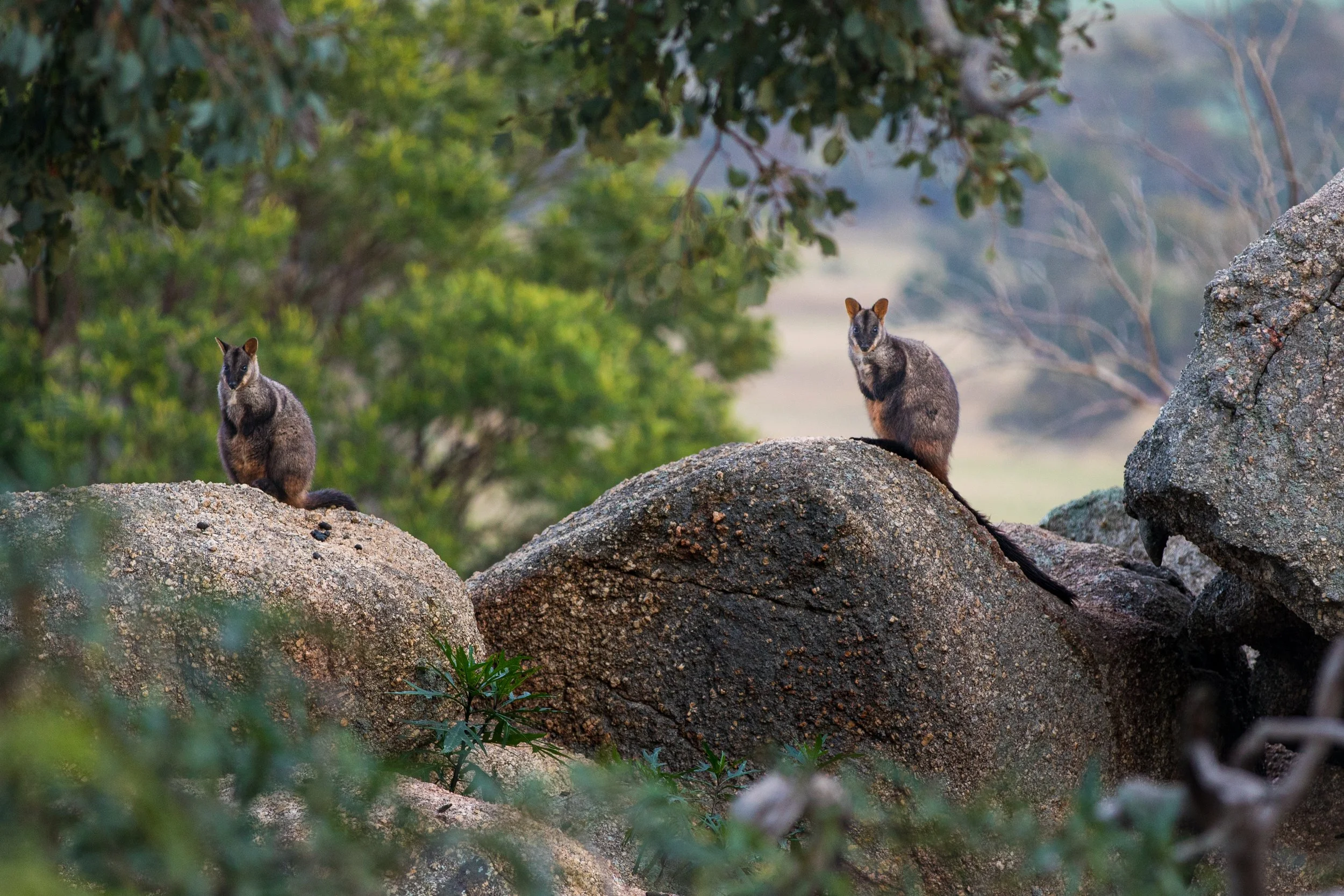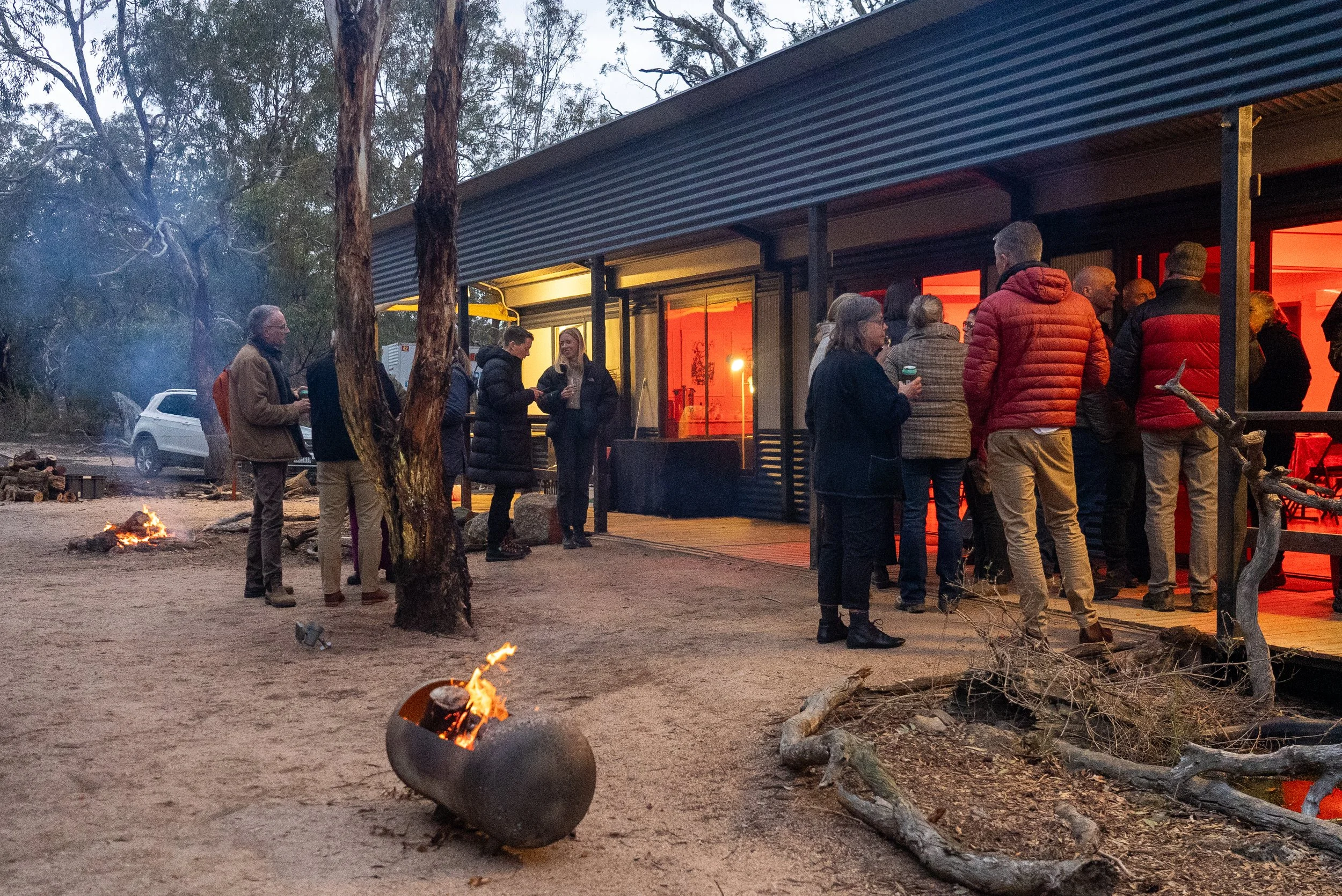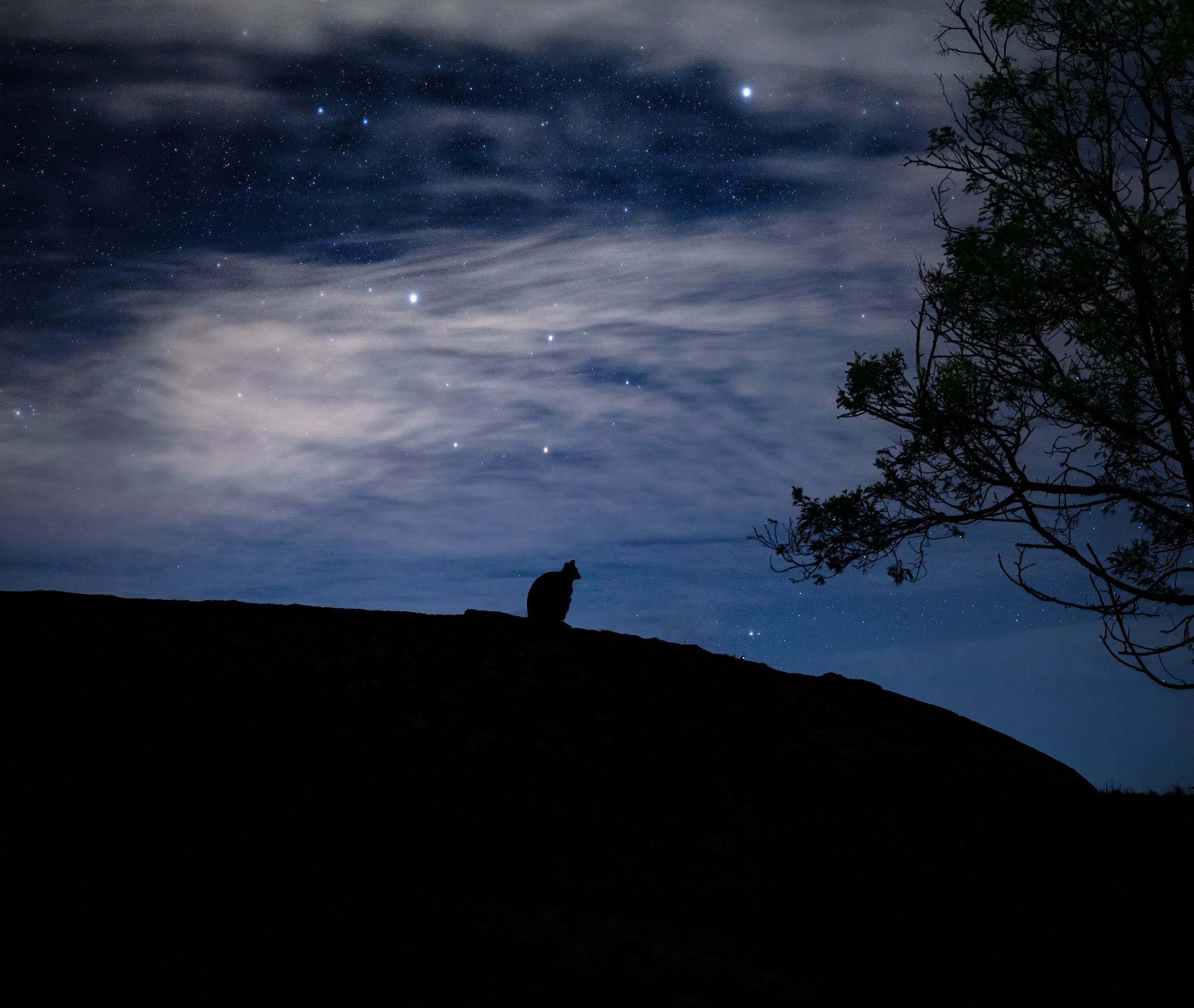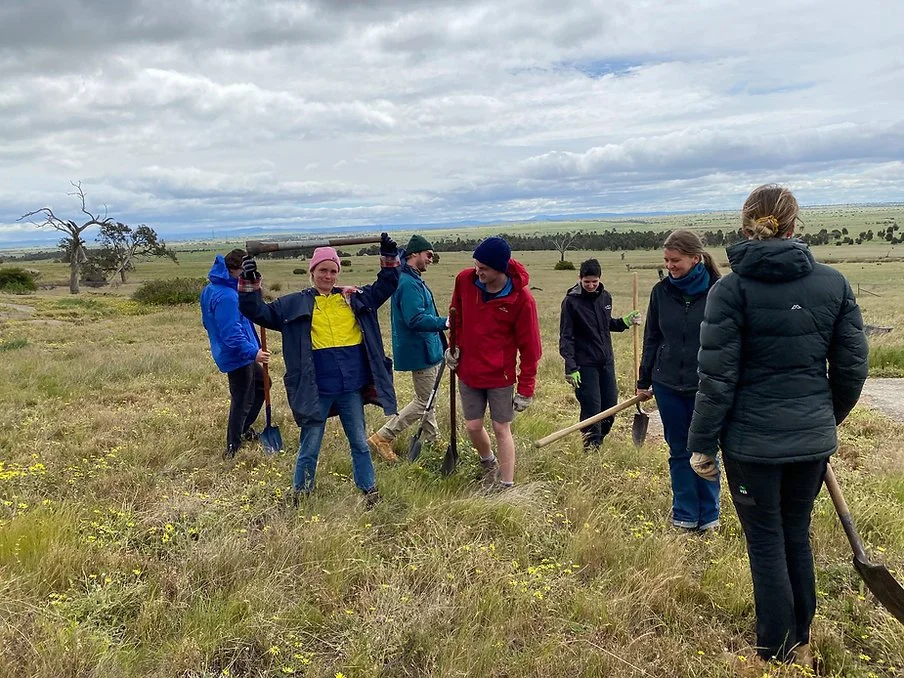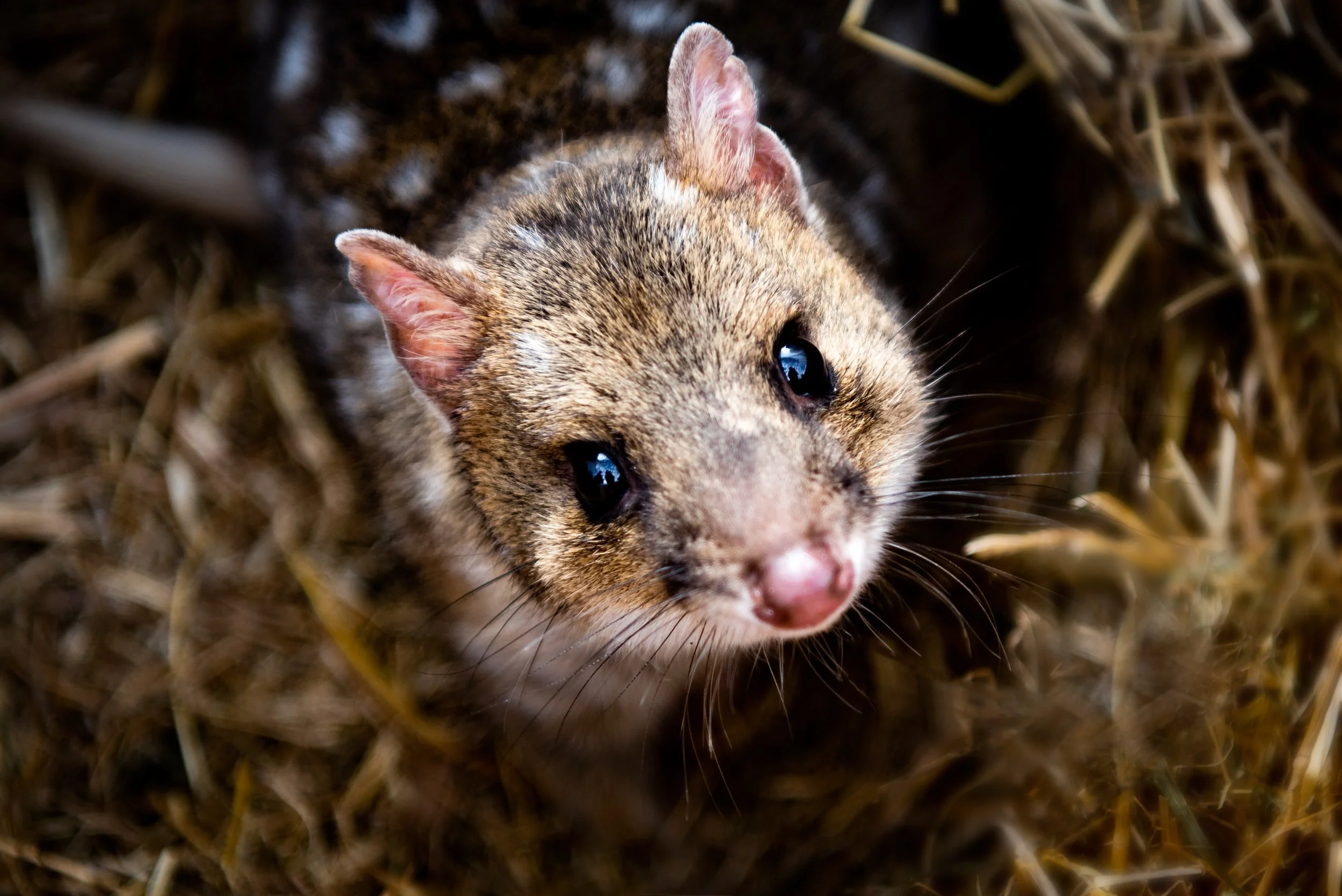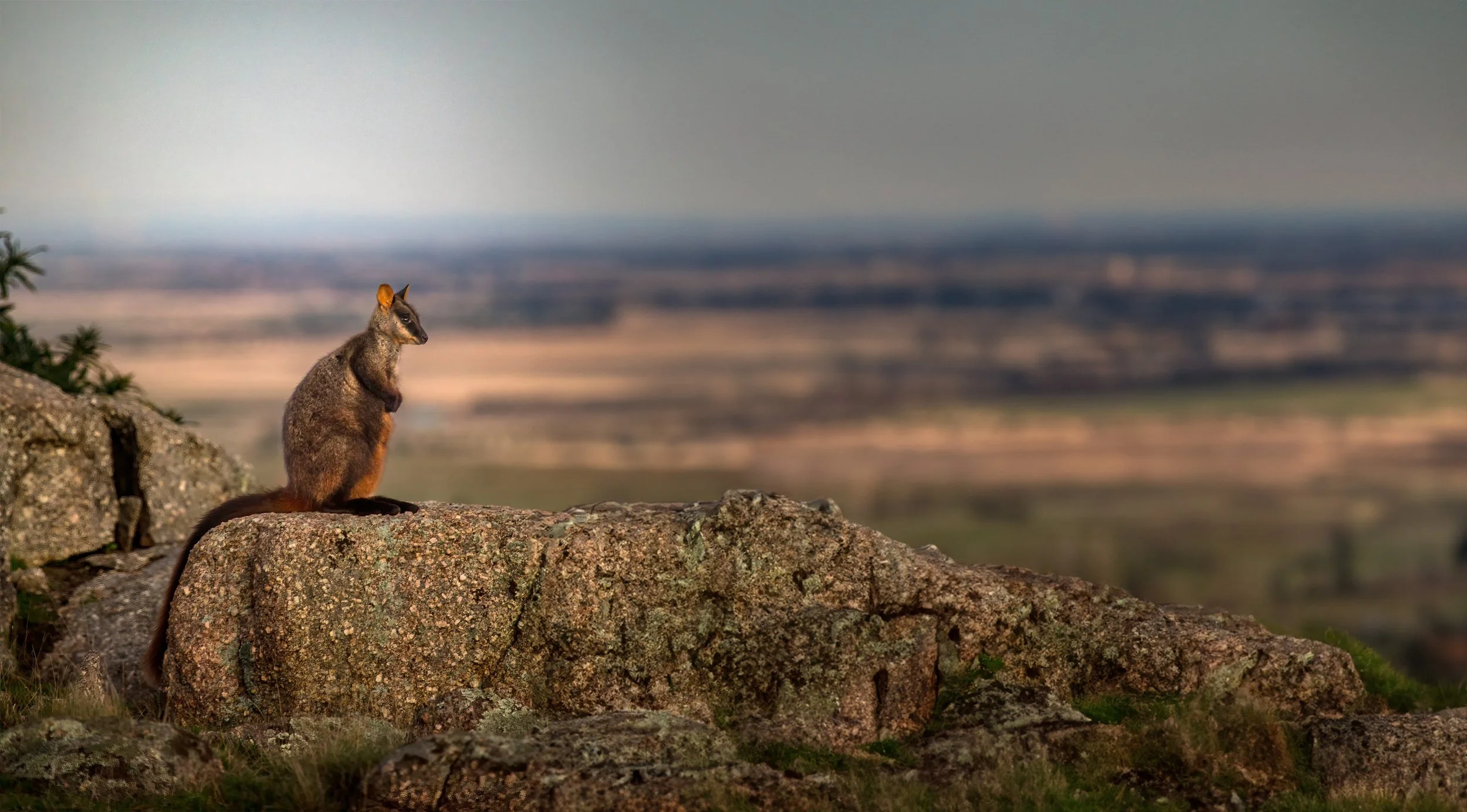
Welcome to
Mt Rothwell
Managed by Odonata Foundation, Mt Rothwell is just 50 km west of Melbourne and Victoria’s second-largest predator-free safe haven. Step into 473 hectares of protected grasslands and woodlands and meet some of the state’s most threatened wildlife, from eastern barred bandicoots to southern brush-tailed rock-wallabies and eastern quolls.
An 50min from Melbourne and under 40 minutes from Geelong, Mt Rothwell offers night tours, volunteer days and private events where you can see rare animals thriving in their natural habitat, and help protect them for future generations.
Explore and get involved
Hire our spaces
Bring your next gathering to life at Mt Rothwell’s Interpretation Centre.
Corporate volunteer days
Strengthen your team while making a meaningful contribution to wildlife and habitat restoration.
Public and private spotlight tours
Take a walk with our expert guides and watch in awe as Mt Rothwell Sanctuary comes alive after dark.
School tours and education programs
Observe wildlife up close, and engage in hands-on learning about threatened species, ecosystem management, and habitat restoration.
Become a volunteer
Contribute to a legacy of conservation that stretches far beyond Mt Rothwell’s boundaries.
Support our work
Mt Rothwell is part of Odonata Foundation’s network of safe havens. Donations of $2 or more to Odonata are tax-deductible in Australia and support the threatened species programs based out of Mt Rothwell Sanctuary.
We Save Species
We have set our sights on recovering 9 Core Species over the coming decade, so that resources can be targeted, and impact can be quantified.
We are working concurrently to rebuild genetic resilience in each population, create and maintain feral-free habitats for animals to recover, and support healthy populations at multiple sites to insure against the increasing threat of climate related disasters such as fire, flood and drought.
9 core species
